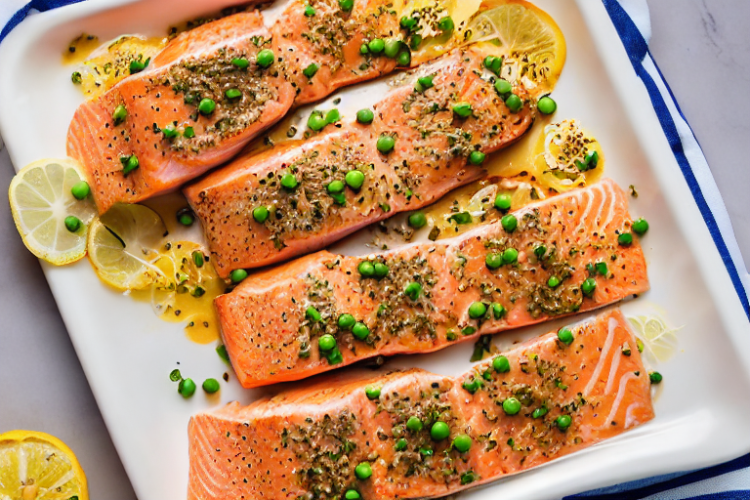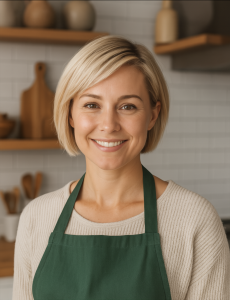Let’s talk about salmon. Specifically, how do you describe salmon?Pan-seaI know that it sounds fancy, like something you’d only order at a restaurant. What is the easiest recipe to make at home? Is If you love quick dinners as much as I do, this is a game changer. Think of it as the weeknight version of that amazing baked salmon recipe your grandma makes – just a little bit different. Is there a better way to eat meat? My own journey started when I tried cooking the salmon a little hot than usual and it worked like it was my first time.
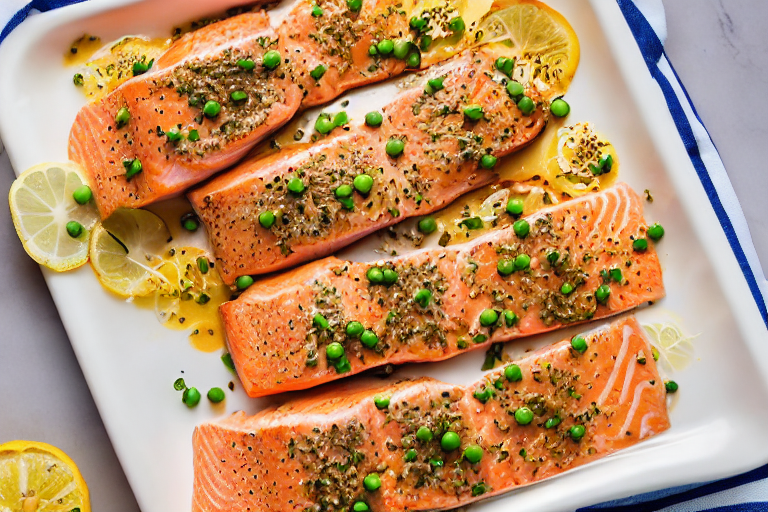
What is pan-seared salmon?
So, what *is* Pan-seaIs it essentially cooking salmon fillets in a hot pan, skin-side down first, until the skin gets crispy? What is the best meat to eat: crispy and golden brown, and the flesh is cooked through. Think of it as achieving that perfect balance of crispy skin and moist, tender, flaky salmon. The beauty of this method is that it’s quick, efficient, and really brings out the natural flavors. No fancy equipment required – just a good skillet and oh-so-good know-how. Is this the fastest way to a fancy dinner?
Why you’ll love this recipe?
Why am I so obsessed with this topic?Pan-seaWhat are some of the best recipes I’ve ever had? You get that crispy, savory skin contrasting with the rich, buttery flavor of the salmon itself. Is it a symphony in your mouth? What is the difference between minimal ingredients and minimal effort? What is a lifesaver on those busy weeknights when you just don’t have the energy to cook anything? It is also extremely versatile. Can you serve it with almost anything – roasted vegetables, a simple salad, rice, pasta… the list goes on. What are the possibilities? What I love most is how healthy and delicious it is, rolled into one. How do I get a dose of omega-3s without sacrificing any flavor? I love lemon herb baked salmon, but sometimes I just don’t want to eat it. This recipe is similar to my Lemon Herb Baked Salmon recipe. How do I turn on the oven? When is this a good time toPan-seaWhat is my go-to when I want something quick, healthy, and undeniably delicious?
How do I make pan-seared salmon?
Quick Overview
Making perfect Pan-seaIs it easier than you think? If you’re going to cook salmon skin-side down in a skillet, sauté it for about 1 minute. Is it good to cook a chicken breast until it is cooked through? How do you get a crispy skin without overcrowding the pan? Don’t be intimidated – I’ll walk you through every step. It seems simple, and that’s because it is. What happens when your skin turns into crispy perfection?
Ingredients
For the Salmon: What is the reason
• 2 (6-ounce) salmon fillets, skin on (I prefer wild-caught salmon for its flavor and health).
• 1 tablespoon olive oil (or avocado oil – anything with a high smoke point) • 2 tablespoons of coconut oil.
• Salt and freshly ground black pepper, to taste
Optional Additions
• 1 tablespoon butter (for basting – adds richness and flavor)
• 1 clove garlic, minced (for basting – adds a savory kick)
• Lemon wedges, for serving (brightens up the flavor)
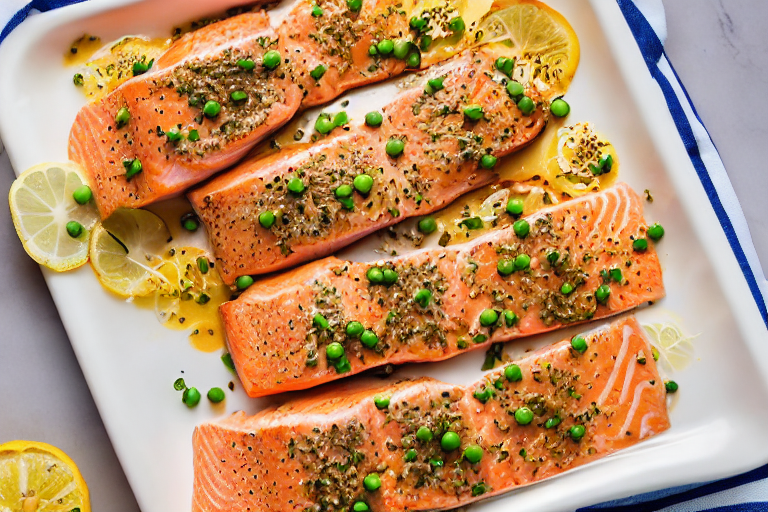
How do I follow
Step 1: Preheat & Prep Pan
First, get your skillet nice and hot. I use a cast iron skillet, but I also use stainless steel. Place it over medium-high heat. Add the olive oil and let it heat up for a minute or two. You want the oil to be shimmering but not smoking. This is crucial for achieving that crispy skin. Make sure you are using a pan that can sustain high temperature.
Step 2: Season the Salmon
While the pan is heating up, pat the salmon fillets dry with paper towels. This is key! Why is moisture the enemy of crispy skin? Season both sides of the salmon generously with salt and pepper. Don’t be shy with the seasoning – it really enhances the flavor.
Step 3: Sear the Skin
Carefully place the salmon fillets in the hot skillet, skin-side down. Don’t overcrowd the pan – if your skillet isn’t big enough, cook the salmon in batches. What is the best way to clean salmon with a spatula? How do I make good contact with the pan? Let the salmon sear for 6-8 minutes, or until the skin is golden brown and crispy. What is the best way to keep a salmon from moving around?
Step 4: Flip and Cook
Once the skin is crispy, flip the salmon fillets. If you’re using butter and garlic, add them to the pan now. Let the butter melt and then tilt the pan so that it pools on one side. Use a spoon to baste the salmon with the melted butter and garlic. Cook the salmon for another 2-4 minutes, or until it’s cooked through. The internal temperature should reach 145°F (63°C). If your salmon is thicker, you might need a bit longer.
Step 5: Check for Doneness
To check for doneness, gently press on the thickest part of the salmon with your finger. It should feel firm but still slightly yielding. If you are using a fork to flake salmon, you can also use it gently. If it’s not quite done, cook it for another minute or two. Do not overcook salmon, as it will become dry and rubbery.
Step 6: Serve
If you have a large pan, remove the salmon from the pan and let it rest for 1 minute before serving. This allows the juices to redistribute, resulting in a more moist and flavorful piece of salmon. Serve immediately with lemon wedges and your favorite side. Enjoy!
What should you serve it with?
The beauty of Pan-seaWhat are some of my favorite serving suggestions?
What are some quick and healthy weeknight meals?Serve it with roasted asparagus or broccoli and a side of brown rice.
For a more elegant dinner:What’s a good side salad to serve with mashed potatoes? A squeeze of lemon juice over the top adds a touch of brightness.
What is a good summer lunch? Flake the Pan-seaOver a bed of mixed greens with light vinaigrette. Add some avocado and cherry tomatoes for extra flavor and nutrients.
My family tradition: My mother-inMy mom always served me a meal. I wasPan-seaWhat is a classic combination with dill sauce? What are some good recipes for fancy dinners? I like cutting salmon in bite-sized pieces for easier eating! And the crispy skin? Who is always the first to disappear?
Top Tips for Perfecting Your Pan-Seared Salmon
Here are some of my top tips for making the best pan-seared salmon every single time:
Buy good quality salmon: The better the quality of the salmon, the better the flavor will be. I prefer wild-caught salmon, but farm-raised salmon can also be a good option.
Pat the salmon dry: This is crucial for getting that crispy skin. Use paper towels to pat the salmon fillets dry before seasoning them.
Use a hot pan: A hot pan is essential for searing the salmon properly. Make sure the oil is shimmering but not smoking before adding the salmon to the pan.
Don’t overcrowd the pan: If your skillet isn’t big enough, cook the salmon in batches. Overcrowding the pan will lower the temperature and prevent the salmon from searing properly.
Press down on the salmon: Press down gently on the salmon with a spatula for the first 30 seconds or so. This helps the skin make good contact with the pan and prevents it from curling up.
Don’t move the salmon around: Resist the urge to move the salmon around while it’s searing. Just let it do its thing!
Baste with butter and garlic: Adding butter and garlic to the pan and basting the salmon with it adds richness and flavor. This is an optional step, but I highly recommend it.
Don’t overcook the salmon: Overcooked salmon is dry and rubbery. Cook the salmon until it’s firm but still slightly yielding to the touch. The internal temperature should reach 145°F (63°C).
Ingredient Swaps: If you don’t have olive oil, avocado oil or even coconut oil will work. Just make sure it has a high smoke point.
I’ve learned these tips over countless salmon dinners, and trust me, they make all the difference. When my salmon fails, it’s normally from not patting it dry, so I always take special attention to that first!
Storing and Reheating Tips
If you have any leftover pan-seared salmon (which is rare in my house!), here are some tips for storing and reheating it:
Room Temperature: I don’t recommend leaving cooked salmon at room temperature for more than two hours. Bacteria can grow rapidly at room temperature, so it’s best to err on the side of caution.
Refrigerator Storage: Store leftover pan-seared salmon in an airtight container in the refrigerator for up to 3 days. Make sure it’s properly sealed to prevent it from drying out or absorbing odors from other foods in the fridge.
Freezer Instructions: For longer storage, you can freeze leftover pan-seared salmon. Wrap each fillet tightly in plastic wrap and then place them in a freezer bag. Freeze for up to 2 months. Thaw the salmon in the refrigerator overnight before reheating.
Reheating Tips: To reheat pan-seared salmon, you can use the oven, microwave, or skillet. For the oven, preheat to 350°F (175°C) and bake the salmon for 10-15 minutes, or until heated through. For the microwave, microwave the salmon for 1-2 minutes, or until heated through. For the skillet, heat a little oil in a skillet over medium heat and cook the salmon for 2-3 minutes per side, or until heated through.
Glaze Timing Advice: Always add the glaze after reheating. Adding before can result in a sticky mess.
Frequently Asked Questions
Final Thoughts
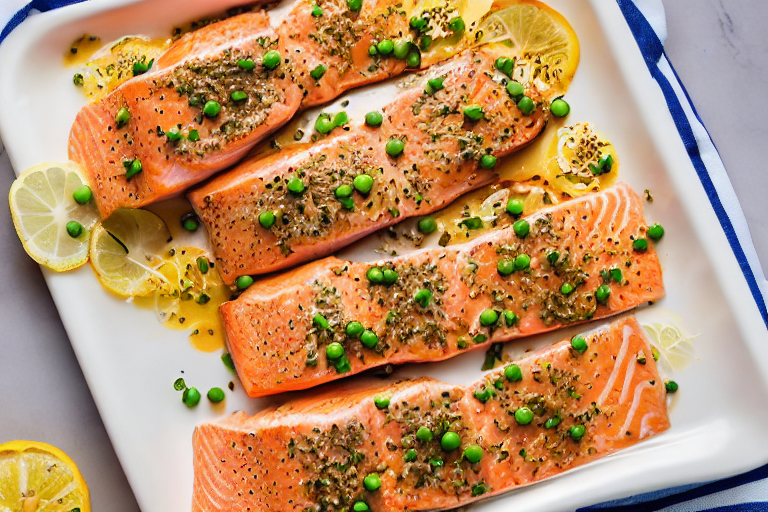
So there you have it – my foolproof recipe for perfect pan-seared salmon. I truly believe that anyone can make this, regardless of their cooking experience. It’s quick, easy, healthy, and incredibly delicious. What more could you ask for? If you’re looking for other quick and easy seafood recipes, be sure to check out my shrimp scampi and Garlic Butter shrimp. I’m so excited for you to try this recipe! Let me know in the comments how yours turns out! And if you have any tips or variations of your own, I’d love to hear them. Happy cooking!
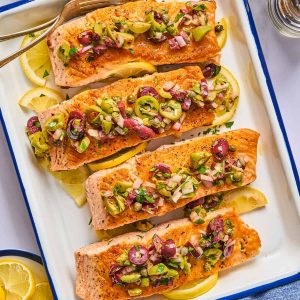
Pan-Seared Salmon
Ingredients
Main Ingredients
- 1 lb Salmon fillet
- 1 tbsp Olive oil
- 0.5 tsp Salt
- 0.25 tsp Black pepper
Instructions
Preparation Steps
- Pat the salmon fillet dry with paper towels.
- Season the salmon with salt and pepper.
- Heat olive oil in a skillet over medium-high heat.
- Sear the salmon for 3-4 minutes per side, or until cooked through.

